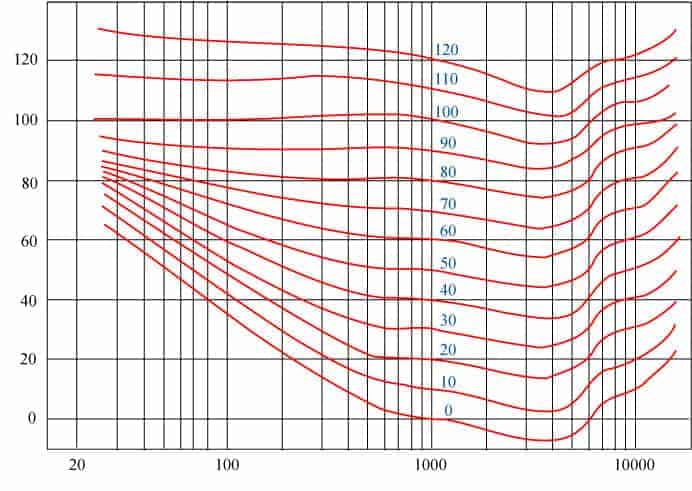What is headroom and why is it important?
When deciding which in-ear monitor to get, there is more to the decision than just the number of drivers. In a previous post, we discussed a bit about balanced armature drivers and we also talked about how many drivers you need here.
This post takes the discussion a bit further. Perhaps more important than the number of drivers is how the drivers work together to produce the right sound for you. This is where headroom comes in.
Different frequencies require different amounts of power to produce. Low frequencies needs lots of power where higher frequencies don’t need as much. There are lots of technical articles available for those who want to learn more about headroom and loudness curves. We’ll try to keep it simple here.
There is this thing called Loudness, which is actually a semi-technical term. According to our good friend science, bass frequencies take multiple times more power to be perceived as loud as other frequencies like mid-range. In any given song, you might have as much as 80% of the energy dedicated to the lower part of the spectrum. The high end stuff might account for less than 10% of the total energy.
This is why a 350W bass amp is considered a relatively low powered amp, where a 100W guitar amp is considered a screamer. Low end needs more power.

Bringing Headroom Back
Lets bring headroom back into the equation now. Headroom is basically how much clean volume you have before peaks and other parts of the music start distorting. Guitar players are more familiar with this concept since distortion and clean are both desirable at times (See this article about Headroom by Fender). When it comes to digital audio and in-ear monitors, distortion is not desirable.
So why does that matter to a discussion on in-ear monitors?
Let’s say you are a bass player or drummer. You are a bass player or drummer. Now, when you are performing, what is the loudest part of your mix? Probably the bass or the kick or both. After all, it’s generally considered a good thing to hear yourself when you are playing.
Since those are both low end heavy instruments, there will be a lot of low end. Since the low end represents a significant amount of the total energy of a song, it is critical that you have a driver configuration that supports all that energy. If you don’t your low end will distort and smother the other frequencies.
Headroom and the IEM
What are the options? First, make sure you get a driver configuration designed to handle the low end you intend to throw at it. Two drivers at least are important so that one driver can handle the low end, and the other can handle the upper end. You can make sure that the low end driver is a nice big woofer (like on our Tour triple driver). Not all are. Some models have small woofers that will not reproduce all that energy (like our Reference for example).
Or you can get a model with multiple stacked Low end drivers. This divides the energy across two (like our RSM) or more (like our CMVK, Spire, or RevX) drivers. Our CMVK is an incredible bass and drum tool with 4 dedicated low end drivers. Since the woofers take care of all that 80% energy, the tweeter has plenty of room to work with the other 20%. The Spire six driver has four woofers too in a configuration that allows it to not be very bassy, but still have all that headroom when you need it.
Whatever monitor you select, make sure it can handle the low end. Bass players, drummers, hip-hop vocals, Dj’s… Get something that can handle the low.
Dive Deeper
For more exploration on loudness, the loudness wars, modern music and headroom, here are some links:
